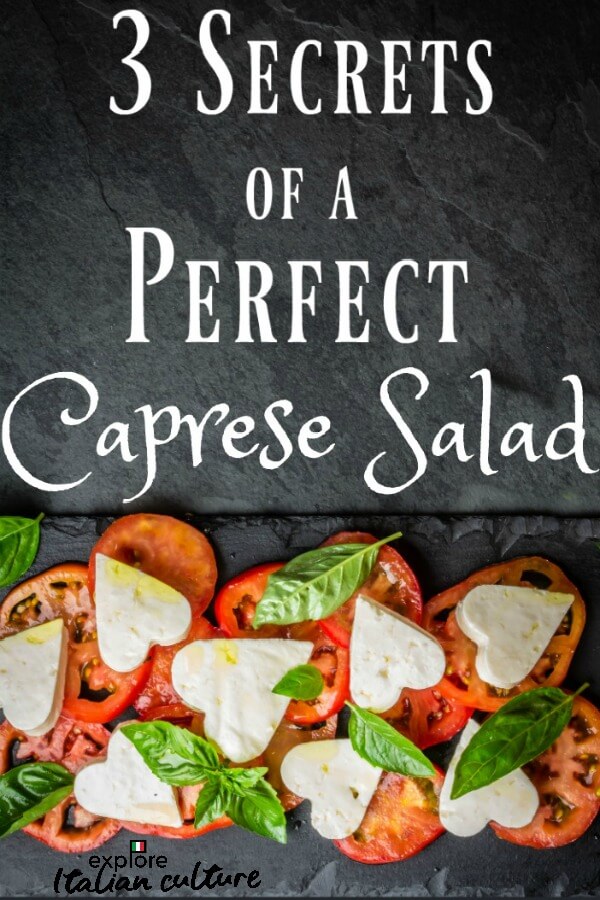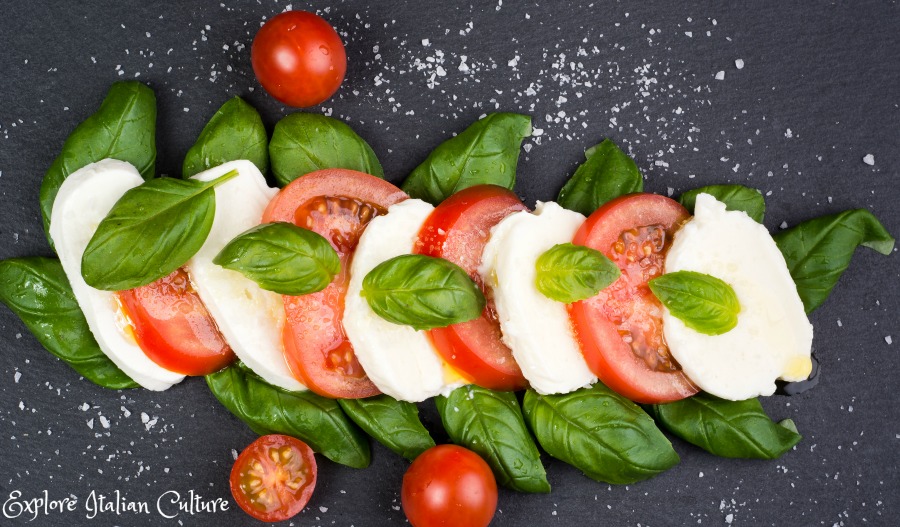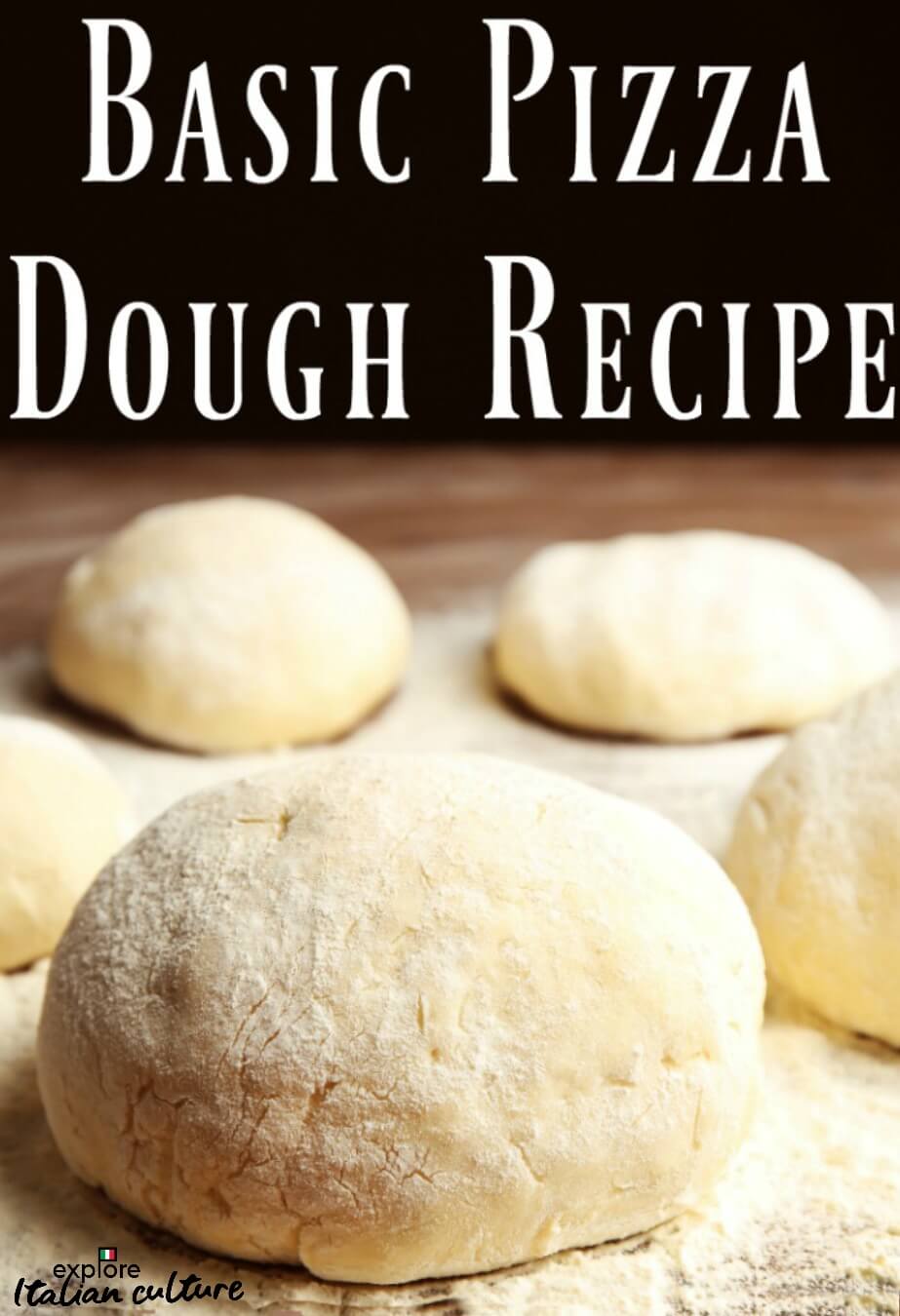- Home
- Secrets of a Caprese Salad
The 3 secrets of a perfect Italian Caprese salad.
It may look simple, but there are secrets to making a Caprese salad that's as delicious as those you'll be served in Italy.
This most well-known of all Italian salad recipes may be served almost everywhere, but it's not as straightforward as you might think to make a good one.
If you've ever eaten one outside of Italy - and even some within the country - you'll know how dreadful they can taste. Bland, watery, and in need of lots of salt and herbs to cheer them up.
But it doesn't have to be that way.
Read on to discover the secrets that will make your Caprese salad the talk of the town - whether that town is in Italy or on the other side of the world.
The secrets start with the origins of Caprese salad.
It's important to know where this recipe comes from, because that will unlock much about the secrets of making it an authentic, tasty dish.
Although you'll find it on menus throughout Italy, as the name suggests it originated on the beautiful Isle of Capri, down on the south side of the Bay of Naples.
Think about that for a moment. What does Capri say to you? Sunshine. Fresh produce. Passion. Tomatoes that ripen in the warmth of the year-round sun.
Then, take a minute to reflect on the colours used in this recipe. Green, white and red - the colours of the Italian flag. That's why it's sometimes known as the "Insalata Tricolore" - the "Three Coloured Salad".
The most patriotic of Italian salads, then, combined with the produce of one of Italy's most beautiful regions.
Now are you feeling the passion?
What a true Caprese salad recipe should contain.
Tomatoes. Mozzarella cheese. Basil. A drizzle of extra virgin olive oil.
And that's it. No avocado. No strawberries. No olives.
It's not quite that simple, though. To make it the best it can be you need to learn the secrets of a true Italian Caprese recipe.
Read on.
Secret #1: Choosing tomatoes for your Caprese salad.
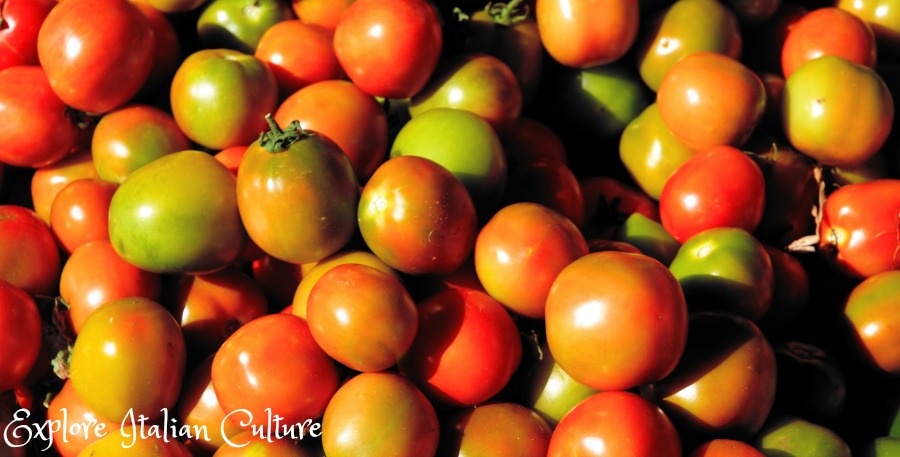
Most people - even some of the greatest chefs - will take tomatoes from the fridge, slice them into quite thick medallions, and plonk them unceremoniously on a plate with equally thick slices of mozzarella.
Wrong.
Tomatoes should never be refrigerated. It makes them watery and robs them of their truly delicious taste. Keep them at room temperature for the best flavour.
If yours seem watery and don't taste of anything much - a lot of tomatoes found in supermarkets are pretty tasteless - try roasting them and leaving them to cool before using in the salad. Put them on a baking tray, add slices of garlic, spritz with extra virgin olive oil and roast in a slow oven for a couple of hours.
Alternatively, slice and sprinkle with salt and leave for 30 minutes or so to being out a more intense flavour.
Summertime is the best season to make a Caprese salad because it's the point at which tomatoes are at their tastiest. For the best ever taste, why not grown some different varieties in your own garden? It's what happens in Italy - you'll never see a summer garden without rows of tomato plants of different shapes and sizes!
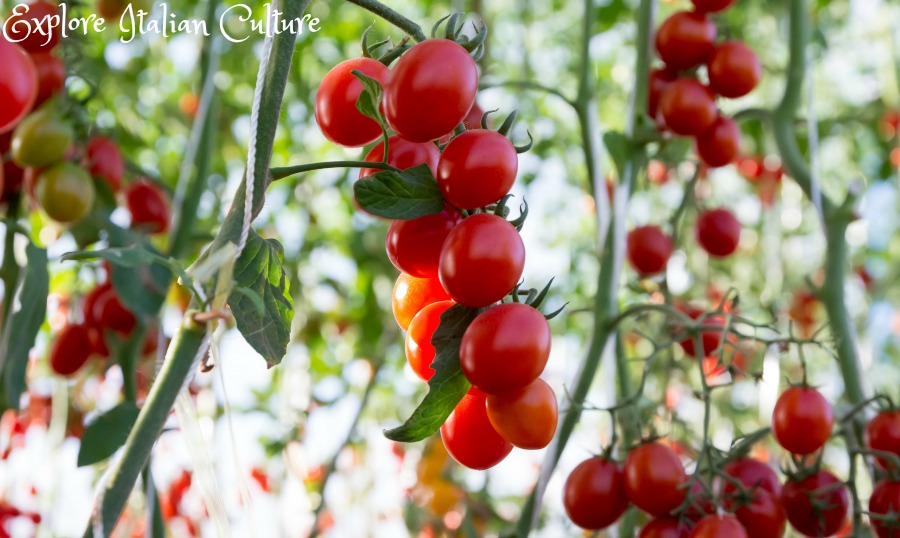 No self-respecting Italian garden is ever without tomato plants!
No self-respecting Italian garden is ever without tomato plants!Don't go for the same old red salad tomatoes. Aim for a selection of different varieties and shapes to add different tastes and textures to the dish. When choosing from a stall, aim for those that feel heaviest. They'll also be the juiciest.
And although this sounds strange, try to include some green tomatoes in your selection. Caprese salad from the south of Italy always includes them, and they add a special tang to the salad which is an ideal balance for the sweeter red tomatoes and the rich mozzarella.
Talking of which...
Secret #2: The best mozzarella matters.
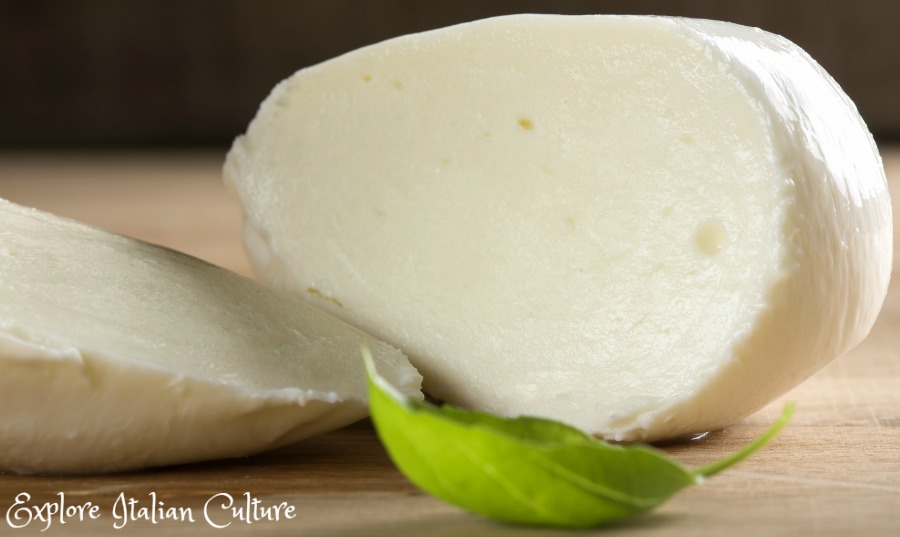
Of course, the cheese for a Caprese salad has to be mozzarella. It's the only cheese able to add that pearly-white touch that a true Caprese has.
But not all mozzarellas are made equal. It's important to choose the one that adds greatest taste and texture to your salad. So, what to look for?
The vacuum-packed mozzarella floating in liquid you'll often find in supermarkets is very bland and a bit milky. Try to buy the best mozzarella you can find - you'll be amazed at the difference it will make.
How to know whether you're getting a quality product? Simple. Check the ingredients on the packet.
Mozzarella takes time to produce. The more expensive cheeses contain only milk, salt, rennet and enzymes. If you see ingredients such as "curd" or "citric acid" you'll know the process was speeded up.
The result of that is a poorer quality mozzarella - one that's also much more salty, because salt is added to try to disguise the bland taste.
When you get it home, push the surface slightly - you should see a few drops of whey - a whitish liquid - appear on the surface.
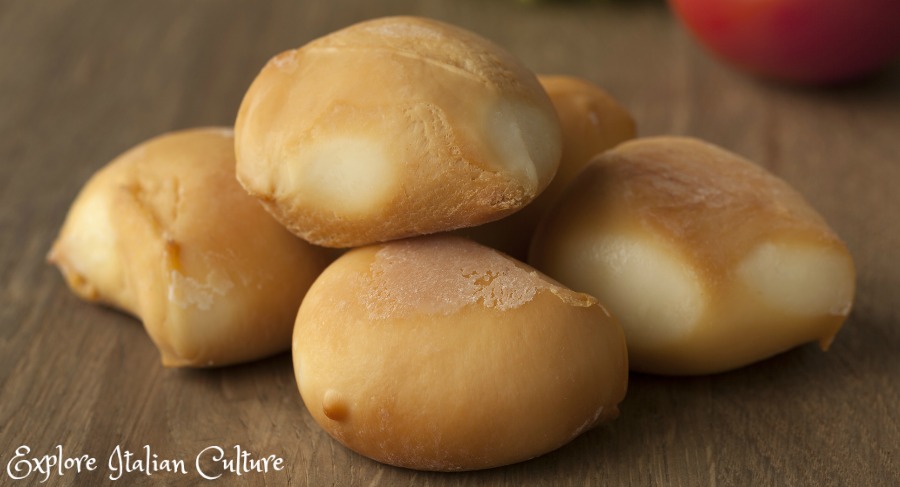 Smoked mozzarella - a thing of beauty and a taste to die for.
Smoked mozzarella - a thing of beauty and a taste to die for.Experiment with different types and brands. Try "mozzarella affumicata" - smoked mozzarella - you'll find it in good delis. Smoked over wood chips, it's drier than other types and the surface becomes a light brown colour. It has a very strong taste though, so use it sparingly.
But the best mozzarella of all, in our view? The "mozzarella di bufala" - mozzarella made from water buffalo milk. Rich, creamy, melt-in-the-mouth. You could drool just thinking about it.
Once you hit on a quality mozzarella, you'll never go back to the processed variety again.
Secret #3: The right basil is the finishing touch.
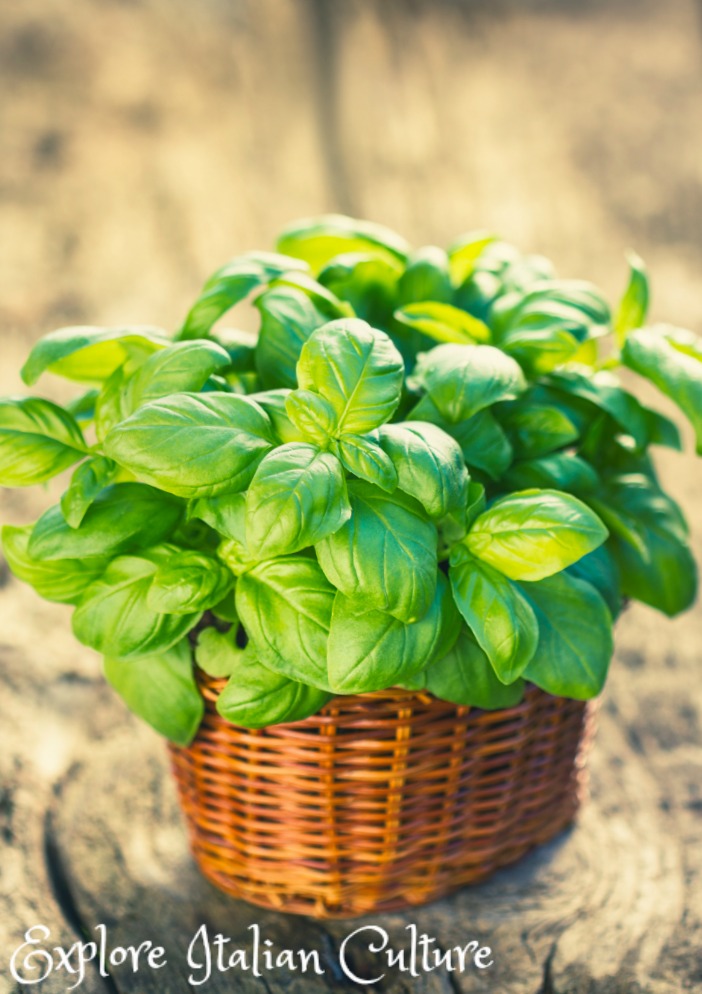
The green of this "tricolore" salad is provided by fresh basil (unless you're also using some green tomatoes, of course).
Most people think that basil is just - well - basil.
Wrong.
Try to find a basil with smaller leaves. The flavour is much more intense. The sweet "Genovese" variety is best for this salad, although if you have problems finding it, the normal, larger leaved version will do, too.
Again, basil is one of those plants you'll find growing in every Italian garden.
Not got a garden? No problem - grow it in a pot. It will survive on a window-ledge or it can live outside from May or June, when the danger of frost has passed.
There's nothing quite like picking your own basil leaves to add to your home grown tomatoes for your scrumptious Caprese salad!
Buon Appetito!
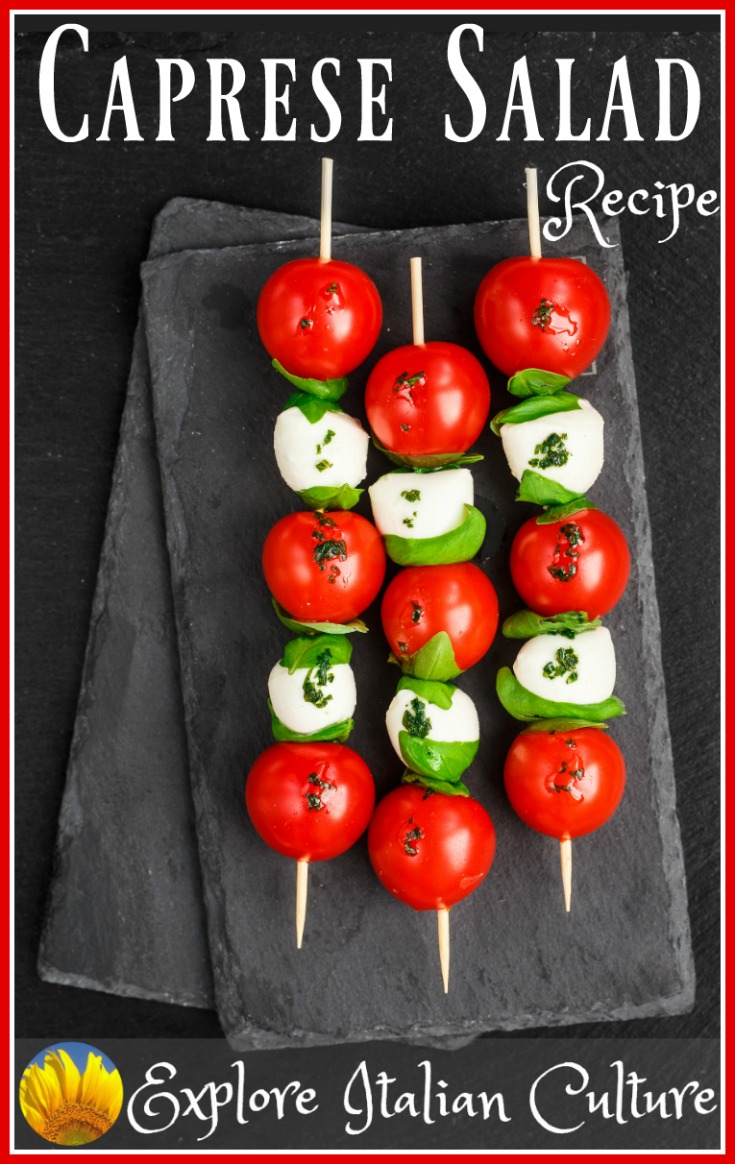
Want to make a delicious Caprese salad?
Now you know the secrets to an authentic Caprese, how about actually making one?
Clicking on this image will take you to our recipe page.
As well as learning how to lay out the salad we'll give you tips for changing its make-up, so that you have a salad for every occasion!
Don't miss it!
